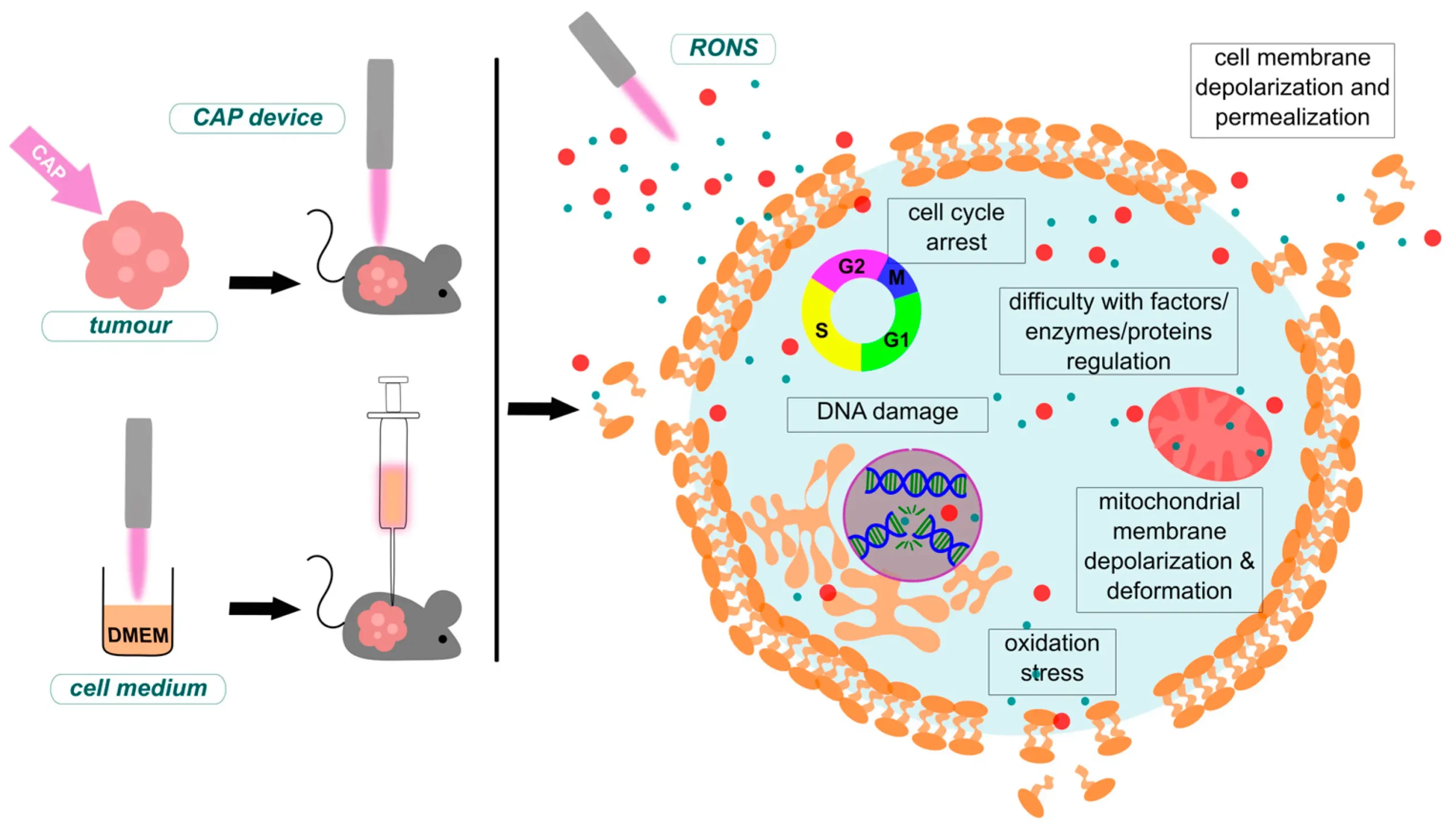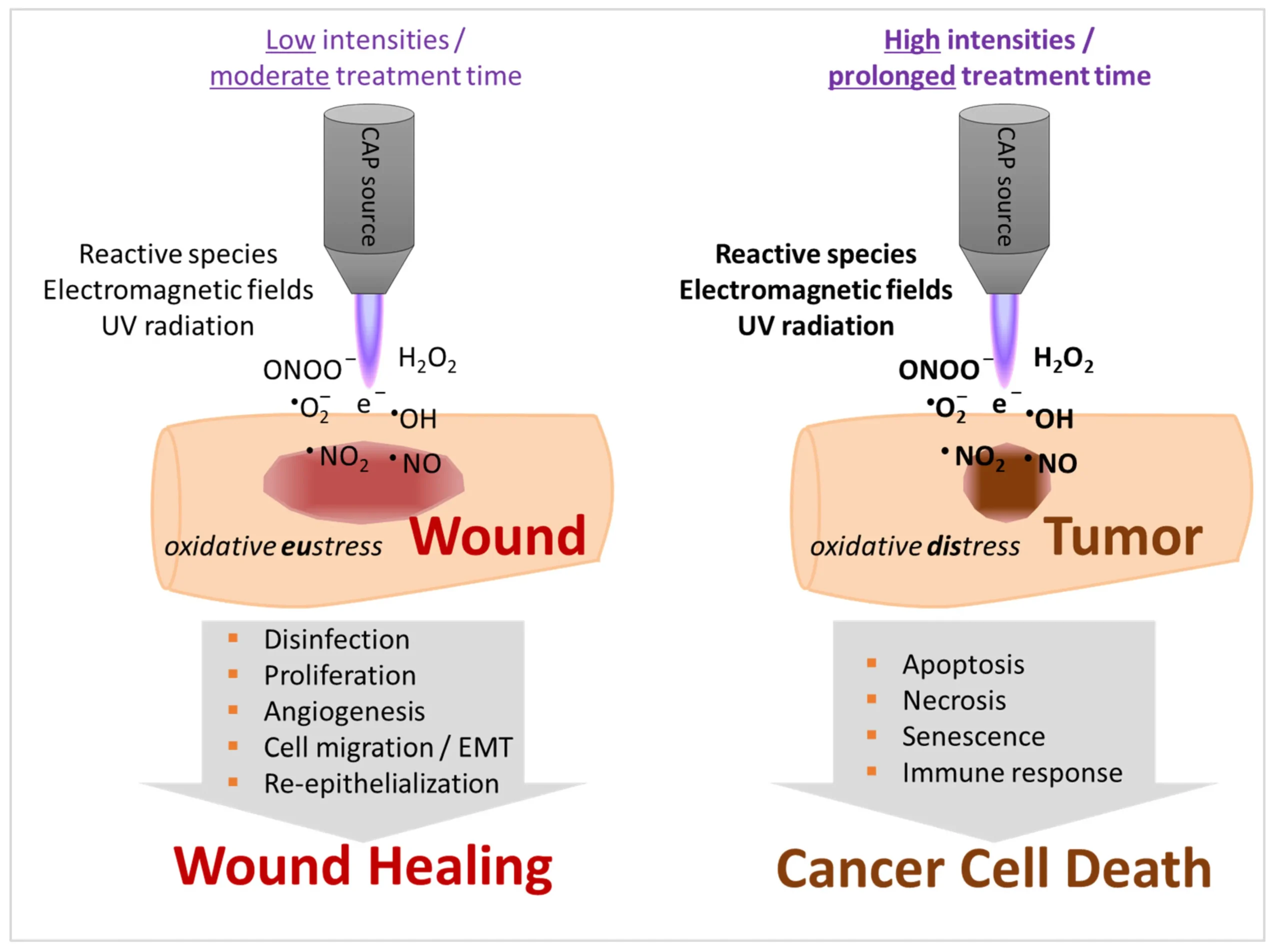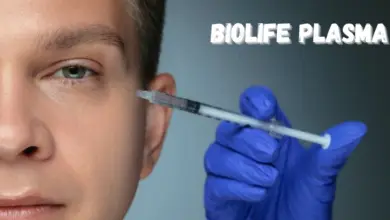1. Introduction
Bioplasma, often referred to as Cold Atmospheric Plasma (CAP), is a partially ionized gas containing electrons, ions, reactive oxygen and nitrogen species (RONS), electromagnetic fields, and UV photons. Generated at near room temperature, CAP maintains a non-equilibrium state where electrons are highly energized while the bulk gas remains cool—a property that enables its safe application to biological tissues without causing thermal damage Nature+15MDPI+15ResearchGate+15.
Its unique features make bioplasma a potent tool across medicine, agriculture, environmental science, and industry. Additionally, Plasma-Activated Water (PAW)—liquid treated with CAP—is increasingly recognized as a practical, versatile biomaterial. There are many companies offering Bioplasma Services. This article explores:
-
The science behind CAP and PAW
-
Their significance in key fields
-
Emerging trends, hurdles, and the future (2025–2026)
2. Science & Mechanisms
2.1. Non-Thermal, Cold Plasma Defined
Non-thermal plasma (or cold plasma) is characterized by electron temperatures of tens of thousands Kelvin, while ions, atoms, and the gas remain near ambient temperature. CAP falls under this category and can be operated at atmospheric pressure, making it practical for direct use on living organisms or surfaces Frontiers+3ScienceDirect+3Frontiers+3MDPIWikipedia.
2.2. Generation Methods
Common CAP generation techniques include:
-
Dielectric Barrier Discharge (DBD): Electrodes separated by a dielectric barrier produce micro-discharges in air or gas.
-
Plasma Jets: Often powered by helium or argon, these jets generate a narrow plasma plume directed onto a target.
-
Piezoelectric Radiofrequency Generators: Hand-held devices that ignite plasma via RF at room temperature MDPIWikipediaFrontiers.
2.3. Composition & Reactive Species
CAP generates a dynamic balance of:
-
Short-lived radicals: OH⋅, O⋅, NO⋅, singlet oxygen
-
Long-lived species: H₂O₂, NO₂⁻, NO₃⁻, O₃ Wikipedia+11Frontiers+11BioMed Central+11MDPI+15SpringerLink+15BioMed Central+15
Together with electric fields and UV emissions, these species exert biological effects like oxidative stress, membrane modification, DNA damage, and immune modulation ResearchGate+12Wikipedia+12MDPI+12.
3. Core Applications
3.1. Healthcare & Medicine
3.1.1. Chronic Wound Healing & Disinfection
-
Mechanism: Moderate CAP exposure activates cell proliferation and angiogenesis; prolonged exposure eradicates microbes and stimulates immune response MDPI+9MDPI+9MDPI+9.
-
Clinical Data: Devices like kINPen and MicroPlaSter have been clinically validated on >150 patients, showing faster healing and reduced bacteria MDPI.
-
Recent Reviews: CAP is increasingly used in critical care, including pressure ulcers and French ICU protocols ResearchGate+10MDPI+10Journal of Integrative Dermatology+10.
3.1.2. Cancer Therapy
-
Selective Cytotoxicity: CAP induces oxidative stress and DNA damage selectively in tumor cells, while non-malignant cells are spared PubMed CentralarXiv.
-
Treatment Modes: Direct CAP jets or indirect plasma-activated media are used against skin, glioma, cholangiocarcinoma, etc. Preclinical models show tumor shrinkage and apoptosis BioMed Central+3arXiv+3ScienceDirect+3.
3.1.3. Dermatology, Dentistry & Beyond
-
Dermatology: CAP addresses acne, rosacea, hair loss, actinic keratoses, warts via antimicrobial and regenerative actions Wikipedia.
-
Dentistry: CAP disinfects root canals, plaques, and surfaces, improving oral hygiene and treatment efficacy ScienceDirectWikipedia.
-
Other Fields: CAP is studied for neural regeneration, prodrug activation, and implant surface modification MDPI+15Wikipedia+15ScienceDirect+15.
3.2. Agriculture & Food Technology
3.2.1. Seed Germination & Plant Growth
-
PAW Efficacy: Pre-sowing seeds with PAW dramatically increase germination rates, cotyledon size, biomass, and plant resilience SpringerLink+6NPH Online Library+6BioMed Central+6. E.g., tomatoes irrigated with PAW achieved 2–4× biomass increase and doubled flower production BioMed Central.
3.2.2. Sustainable Fertilization & Nutrition
-
PAW is emerging as a green nitrogen source, reducing dependency on fossil fuel–derived fertilizers and aligning with UN SDGs MDPI.
3.2.3. Food Safety & Decontamination
-
CAP and PAW enable non-thermal sterilization that removes pathogens (e.g., on oysters, fresh produce) and reduces pesticides without altering nutritional quality PubMed CentralFrontiers.
3.3. Environmental & Industrial Fields
3.3.1. Water & Air Purification
-
Water Treatment: CAP systems (like PWSS) economically disinfect water and degrade pollutants in rural/urban settings Frontiers.
-
Air Sterilization: CAP neutralizes VOCs and airborne pathogens in filters and HVAC systems FrontiersWikipedia.
3.3.2. Material & Surface Engineering
-
CAP modifies surface chemistry to improve adhesion and sterilization—applicable in biomedical implants and textiles BioMed Central+2Wikipedia+2arXiv+2.
3.3.3. Personal Protective Equipment (PPE)
-
CAP decontaminates masks (e.g., FFP3) effectively, though long exposure may degrade filter performance arXiv.
4. Importance & Current Impact
The convergence of CAP and PAW into multidisciplinary platforms reflects their critical importance:
-
Healthcare: Offers non-antibiotic antimicrobials, expedited wound repair, and adjuvant cancer therapy.
-
Sustainable Agriculture: Enhances productivity, reduces pesticide/fertilizer dependence, and supports resource conservation.
-
Food Industry: Ensures safer food via non-thermal methods, ideal for sensitive items.
-
Environmental Health: Advances sterilization and pollution solutions critical for public safety.
-
Industrial Innovation: Introduces ecofriendly surface treatments valued in manufacturing.
5. Trends & Market Projections for 2025–2026
5.1. Market Dynamics
-
With global CAP market valued at approx. USD 2.2 bn (2024) and projected CAGR ~11%, estimates suggest USD 3.6 bn by 2029 Frontiers.
-
Agricultural CAP received growing investment due to PAW’s value in sustainable farming MDPIBioMed Central.
-
Healthcare systems are initiating CAP clinical integration—especially wound care and dentistry.
5.2. Innovation & Convergence
-
AI & Robotics Integration: Precision CAP application using image-guided robotics expected for surgery and agriculture.
-
Device Miniaturization: Development of handheld, low-power, and consumer-grade CAP tools for home use.
-
Hybrid Disinfection Systems: CAP combined with UV, ozone, or filtration systems for robust pathogen control.
-
Space & Defense: NASA-funded studies evaluate CAP for microbial control in spacecraft and planetary habitats.
6. Challenges & Considerations
-
Standardization: Device variability (gas type, voltage, flow) creates reproducibility issues BioMed Central.
-
Regulatory Path: Safety, efficacy, and side-effect profiling required for full clinical approval.
-
Device Accessibility: High-cost prototypes need cost-effective redesigns for global use.
-
Long-Term Effects: Chronic exposure and ecosystem impacts of RONS require in-depth research.
-
Training Needs: Operators require comprehensive training to prevent misuse or underperformance in clinical/agricultural settings.
7. Future Outlook: 2025–2026
7.1. Short-Term (2025)
-
Widespread Wound Care Adoption: Hospitals and outpatient centers launch CAP-assisted wound healing programs.
-
Commercial PAW Systems: PMW (plant micro-farming) units with built-in PAW features for home gardeners and farmers.
-
Consumer Sterilization Devices: Small CAP units for kitchens and personal care appliances hit the market.
-
Clinical Trials Escalation: Studies investigating CAP’s oncology, dermatology, and dental effects progress toward Phase II/III.
7.2. Mid-Term (2026)
-
Regulatory Acceptance: EMA/FDA likely approve medical CAP devices for chronic wounds and dental use.
-
Smart Farming Platforms: AI-enabled PAW irrigation systems launch in controlled agriculture setups.
-
Space Missions: CAP-based air/water sterilization installed on ISS and lunar/planetary mission prototypes.
-
Material Science Integration: CAP surface treatment becomes standard in bio-implant manufacturing.
-
Public & Healthcare Education: Institutional training programs for CAP use proliferate.
8. Conclusion
Bioplasma—through CAP and PAW—is at the forefront of next-gen bio-technology and sustainable innovation. Its unique chemistry enables safe, effective solutions for sterilization, therapy, agriculture, and environmental protection. With expanding clinical applications, market growth, and technological integration, 2025–2026 is positioned as a pivotal period for bioplasma’s mainstreaming. Addressing standardization, regulatory pathways, and cost barriers will be vital to unlocking its full societal potential.
9. Visual Summaries
-
Figure 1 (upper-left): Depicts CAP modes and major biomedical effects ⟶ wound healing, sterilization, tumor targeting arXiv+3MDPI+3Frontiers+3ScienceDirect+14ResearchGate+14MDPI+14ScienceDirect+2BioMed Central+2MDPI+2biomolther.org+6Frontiers+6BioMed Central+6ScienceDirect.
-
Figure 2 (upper-right): Diagram showing RONS species and their generation kinetics in CAP exposure Frontiers.
-
Figure 3 (lower-left): Overview of CAP jet applications—across food, industrial, medical spheres ResearchGate.
10. References
(Selected key citations)
-
Cold Atmospheric Plasma in oncology—emerging selective anticancer tool ResearchGate+14PubMed Central+14biomolther.org+14
-
Generative role of PAW in agriculture: green fertilization & irrigation NPH Online LibraryBioMed CentralMDPI
-
CAP clinical trials in wound healing & dermatology MDPI
-
CAP surgery and implant surface coating integration WikipediaFrontiers
-
CAP device variability and regulatory challenges BioMed Central
-
Market analysis forecasting 11% CAGR Frontiers




